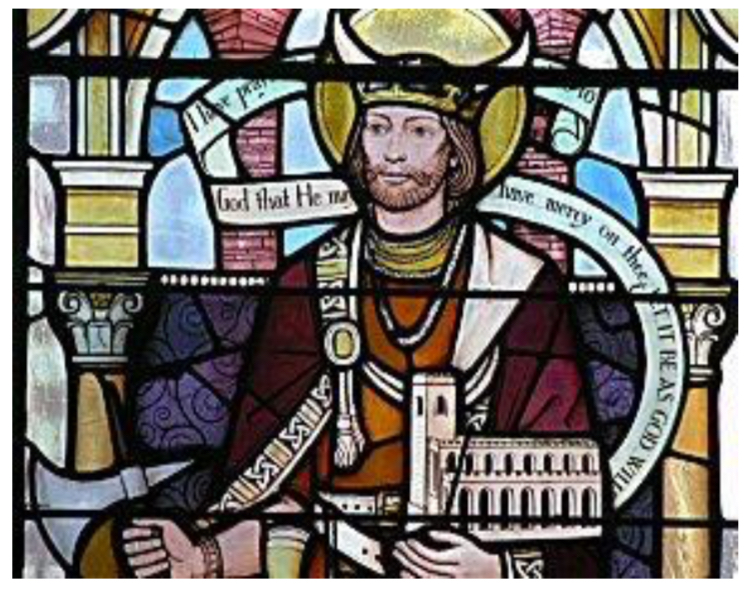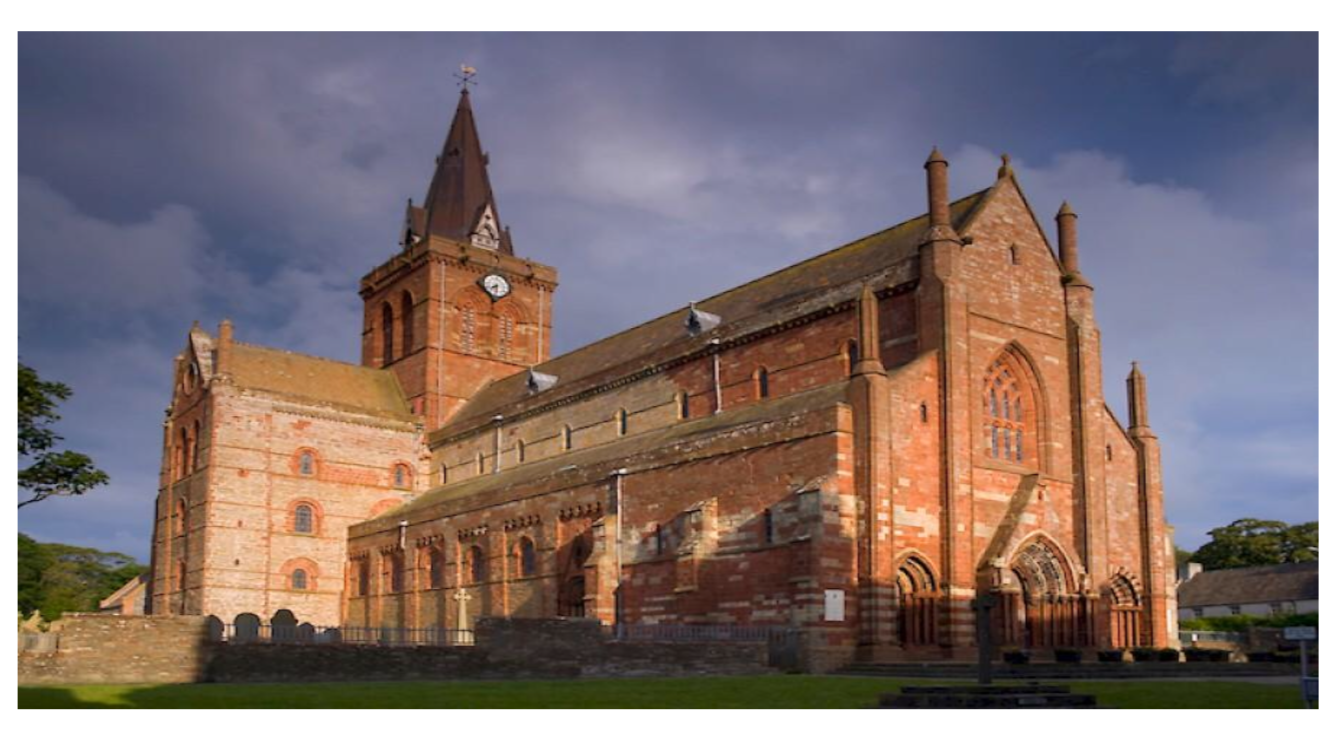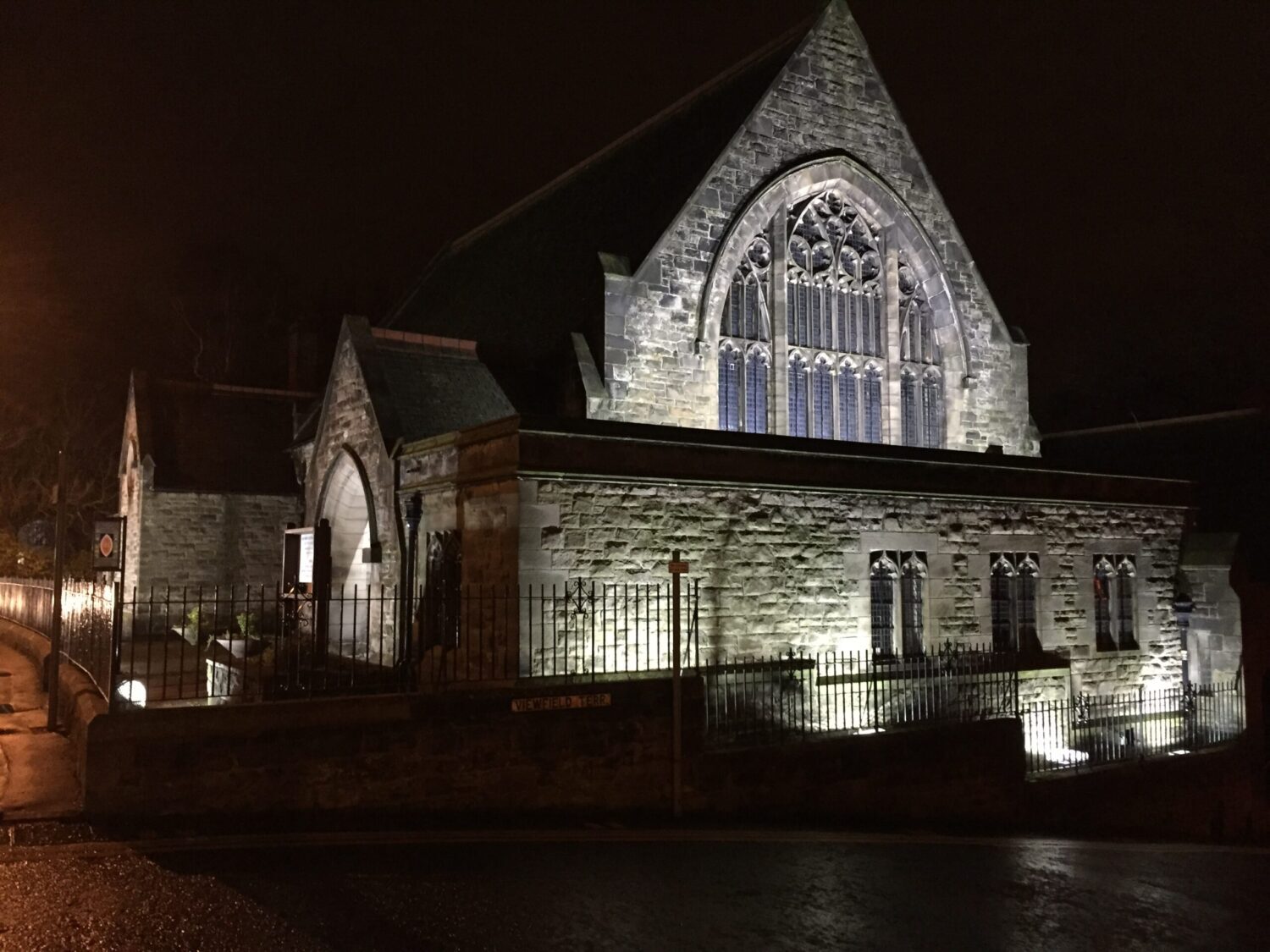You might be forgiven for thinking that our saint this month is a Scottish saint because of his close connection with Scotland and the Orkney Islands, but no he is definitely a Norwegian Viking for during his life the Orkneys belonged to the Norwegians. Also at that time Christianity had only just started getting a foothold in Scandinavia and many Vikings still worshipped Odin and the gods of their mythology. The Vikings had established settlements in the Orkneys and one of their principal sources of wealth came from the plundering of abbeys and settlements on the Scots, English and Welsh mainland.

In 1098 Orkney was ruled jointly by two Viking Earls who were brothers, Paul and Erlend. Magnus was the son and heir of Earl Erlend and Earl Paul had a son Haakon, Magnus’ cousin. The Norwegian king, also called Magnus, visited the Orkneys that year and deposed both earls, and installed his own son Sigmund as Earl of Orkney. He then departed on a raiding voyage in the Irish Sea accompanied by the two cousins, Magnus and Haakon and their followers.
One of the raids they carried out was on an Abbey on Anglesey. The raid took place on a Sunday and Magnus refused to take part because it was a Sunday and also being a Christian he disliked preying on Christian institutions. An intense rivalry had developed between the two cousins and they both had significant followings in the Orkneys. Magnus’ followers praised him for his piety in refraining to take part in the raid while Haakon’s party said he was a coward.
The Norwegian King Magnus died during the expedition in Ireland and the Vikings returned to Orkney. On return to Orkney Sigmund returned to Norway leaving the two cousins to rule the land jointly as their fathers had previously done and both cousins were created earls. The joint reign went on for nine years from 1105 to 1114 and the arrangement seemed to work well. However this could not last and a quarrel arose between the cousins, and the two cousins and their followers met to settle their differences by force of arms. Some of the Elders in the community managed to dissuade the cousins from battle and it was agreed between the two cousins that instead they would meet each other on the Isle of Egilsay and each cousin would only bring two ships with their crews to limit the chance of a major battle, and they both vowed that they would not kill each other.
On the agreed date Magnus went to Egilsay with his two long ships only to be met by Haakon with eight ships. It was clear that Haakon was not going to abide by the agreed rules for the match and Magnus fled but was soon taken and appeared before Haakon and an assembly of the elders from both camps. Magnus seeing that he had no hope reminded Haakon of his vow that he would not kill him and suggested either that he should exiled to go on a pilgrimage never to return to Orkney, or that he should be sent to Scotland to be held in prison by the Scots. Haakon did not favour either of these alternatives and said that he would rather maim Magnus in such a way that he could never be a threat to him. At this stage the elders raised their views saying that the only sure way to secure a satisfactory outcome was for one of the cousins to be killed. Haakon then said that he was not ready to die so that it had better be Magnus. Magnus realised that he had no chance and accepted that he was going to die so to save bloodshed he ordered his followers not to try to defend him.
Haakon ordered Ofeig, his second in command, to execute Magnus but he refused, which angered Haakon who then turned to his cook and instructed him to kill Magnus. The cook, Lifolf, was not happy about this but Magnus comforted him and told him to do it for his own sake and that he Magnus forgave him. Magnus also asked that he might be killed by a blow on the skull rather than having his throat cut for in the next life he wished it to be seen as death in a battle rather a punishment of a criminal. Although Magnus professed to being a Christian the pagan concept of Valhalla where warriors earned their rewards still lingered. Lifolf then killed Magnus with a blow from his cleaver on Magnus’ forehead.
Haakon denied Magnus a Christian burial and he was buried where he fell. Magnus had however been very popular with the ordinary people of Orkney and it was not long before a cult grew up in the islands worshipping him as a saint and martyr, and there followed the usual accompanying stories of miracles through his intercession. After some time, at the behest of Magnus’ mother, Thora, Haakon relented and allowed Magnus’ body to be exhumed and given a Christian burial at Christchurch in Birsay.

In 1135 Magnus was canonised and his bones removed from the grave and enshrined above the main altar in Christchurch. They did not stay there for long, however, for they were then removed to St Olaf’s Church in Kirkjuvagr (Kirkwall) which was now becoming the principal settlement in the islands. Again they did not remain there for long for a new Earl of Orkney, Rognvald, arrived from Norway to displace Haakons ‘s son, Paul, who had succeeded his father. In a battle Rognvald was successful and in order to buy the good will of his subjects promised to build for them the finest church in the North, which was started in 1137 and gave us the wonderful cathedral in Kirkwall (photo above) named for St Magnus. The remains were then moved to the Cathedral where they remain to this day.
If you are ever in Orkney a visit to St Magnus’s Cathedral is a must. It is a beautiful church and very interesting. The author was highly intrigued by one memorial plaque on the wall which is dedicated to “A lawyer yet an honourable man”.

